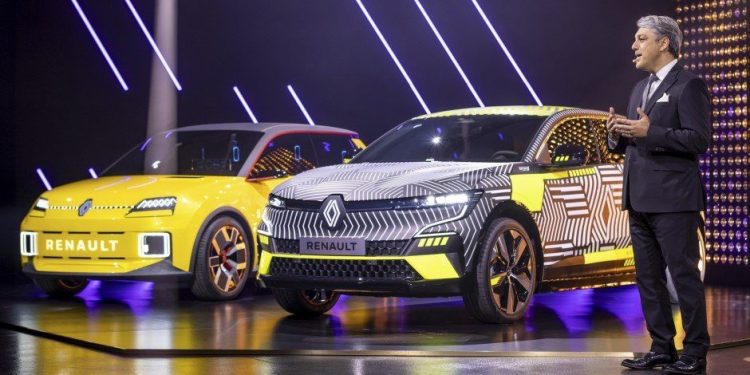Renault confirms electrification plans, names 2030 targets
Renault’s overnight eWays Electro Pop event saw it show off its next fully electric vehicle project, while doubling down commitments to make EVs its main focus in the future.
Perhaps the biggest announcement was confirmation that it would add 10 new electric vehicles in the next five years; a mammoth task.
These will include the retro-styled Renault 5 hatch, the MeganE (which was teased at the event), the Renault 4ever SUV, and a light commercial vehicle. The brand’s Alpine spin-off performance arm will also get three EVs by 2024; a sports car, a hot hatch (potentially being the replacement for the Megane RS), and a grand tourer.

The 4ever and its LCV pair will share Renault’s CMF-BEV architecture; an evolution of the French marque’s current CMF-B platform. Renault claims a range of around 400km per charge on these models.
The 5 is most likely to be the most exciting model in the bunch for enthusiasts. On top of being a rebirth of sorts for one of the brand’s most iconic silhouettes and nameplates, Renault also says the model will be cheap. It expects the model to be a third cheaper than the current Zoe supermini, thanks to shared components, a low-cost 100kWh battery, and other measures.
The Renault MeganE was shown off in camouflaged, prototype spec last month and was once again a significant talking point of the event. It launches next year, which is no surprise given how production it already looks.

It and a larger sister SUV are said to be built on the same architecture, with WLTP ranges of around 580km per charge a piece. Renault clearly fancies the chances that both models will be fun to drive, boasting that they will get a quick steering ratio, a low centre of gravity (typical for EVs), multi-link rear suspension, and balanced weight distribution.
It’s hoped that the CMF-EV platform underneath the MeganE SUV will bring a total of around 700,000 units by 2025. That may sound like a lot in New Zealand, where Renault is a relatively minor player, but in Europe they’re a juggernaut thanks to the popularity of nameplates like the Captur.
In fact, Renault says that by 2025 65 per cent of its models will be electric. And, by 2030 a huge 90 per cent of its models will be electric. The 10 per cent sliver of internal combustion models may represent the brand’s ongoing commercial vehicle sales, but time will tell.





